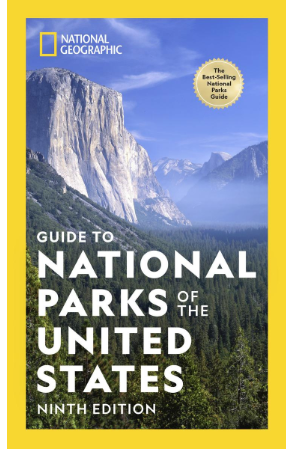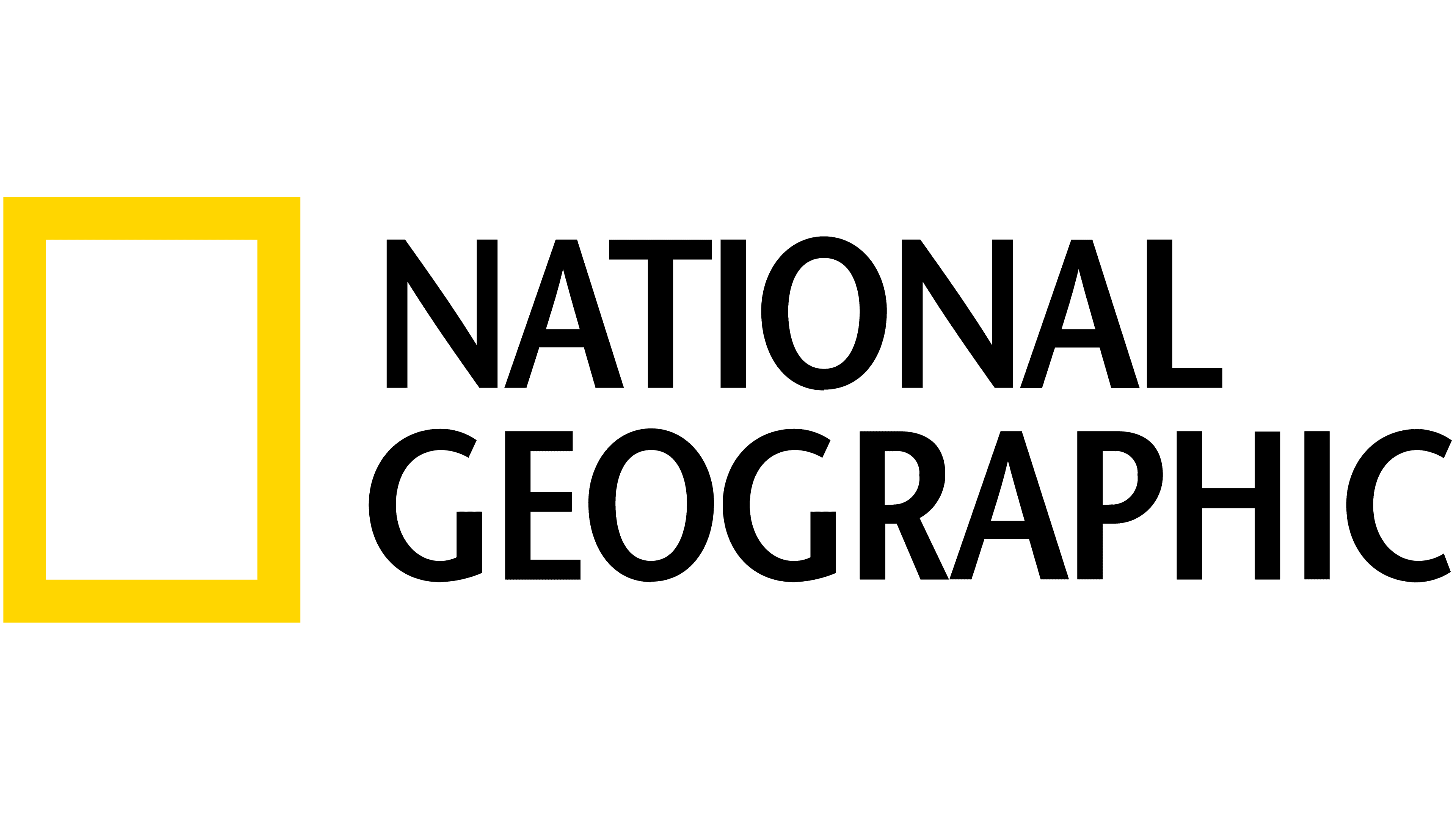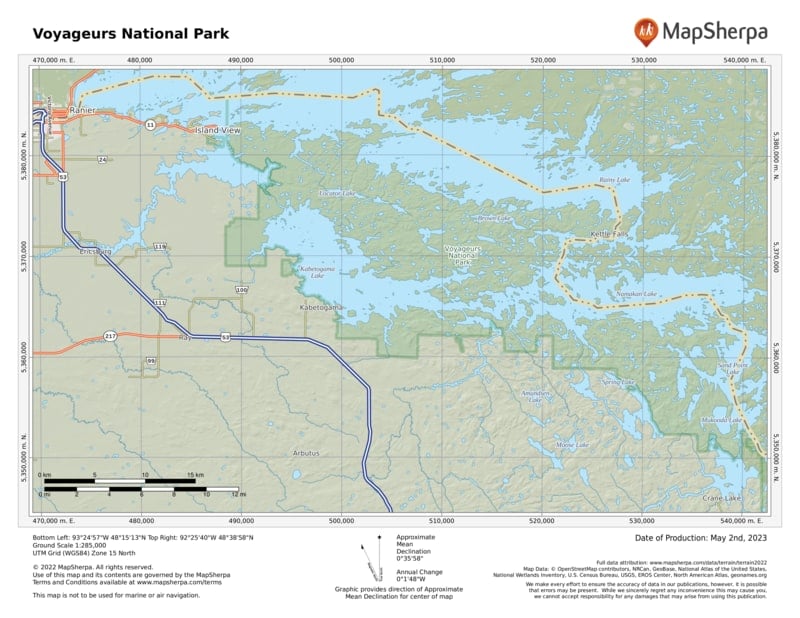This scene and similar idyllic interludes await travelers to Voyageurs. The park is 40 percent water, comprising four major lakes—Rainy, Kabetogama, Namakan, and Sand Point—and dozens of smaller ones. Relatively little of the park is accessible without a boat.
Three visitor centers and a few hiking trails are found on the mainland. Otherwise, Voyageurs is a place of water-centered attractions and activities, with 655 miles of shoreline, more than 500 islands, several historic sites, and secluded campsites on islands as well as on lakeshores. (All campsites in the park can be reached by boat only.)
Many Voyageurs visitors are Minnesotans who use their own kayaks, canoes, motorboats, and houseboats to cruise the lakes. This doesn’t mean that those without a boat can’t enjoy the park. Rangers lead seasonal boat tours, and local firms rent a range of watercraft, including houseboats.
Voyageurs took its name from the famed 18th-century French Canadian adventurers who paddled canoes along lakes and rivers, transporting trade goods westward and furs eastward between Montreal and the vast inland forests of Canada. So influential was this trade route that a 1783 treaty incorporated part of it as the boundary between the United States and Canada.
Fifty-six miles of the former trade route pass through Voyageurs. Boaters need to be aware of their location to avoid crossing the international boundary without the proper permits. (For international permits, 807-274-3655.)
As for the land, in places volcanic bedrock of the Canadian Shield has been exposed by glacial action, revealing greenstone, a type of metamorphosed basalt 2.7 billion years old. Greenstone, granite, schist, and other rocks form picturesque bluffs.
Glaciers retreated about 10,000 years ago, recently enough that only a thin layer of soil has formed atop the rock. The vast stands of white pine that once covered the land are gone, cut by timber operations more than a century ago.
The forest that has grown up represents a blend of boreal woodland and southern temperate forest. In the autumn, the green of conifers such as pine, fir, spruce, and white cedar is complemented by the colorful foliage of maple, birch, aspen, and oak.
White-tailed deer, wolves, and moose roam the woods; otters, beavers, and muskrats make homes near lakes and streams. Eagles and loons are commonly spotted on the water. Campers must use bear-proof containers for food storage to discourage visits from the plentiful black bears.
How to Visit
Plan for at least a two-day visit. If you don’t bring a boat and don’t plan to rent one, check the schedule of ranger-led boat tours and programs ahead of time. (Otherwise you could arrive and find there’s little to do other than hike.) Be aware that the park has three visitor centers that are separated by about 50 highway miles; boat tours and other activities vary among them.
If you do plan to take a boat to a campsite, remember that sites must be reserved in advance (recreation .gov; 877-444-6777). This ensures that everyone who sets out across a lake will have a place to stay, and eliminates the competition for sites between those in motorized craft and paddlers.
A good navigational map is vital for boating these lakes, to learn the location of submerged rocks and other hazards. Mobile phones will work intermittently.
While some campsites are located on fairly protected bays, others require a trip across lake expanses where sudden bad weather can create waves up to four feet. A radio that receives weather alerts is a good idea. A marine-band radio is also helpful.
Visitors interested in history should join a boat tour to Kettle Falls or Little American Island. The North Canoe Voyage, a paddling trip (fee) aboard a reproduction of a voyageurs craft, is fun for adults and children age five and older. On the mainland, the Blind Ash Bay Hiking Trail near the Ash River Visitor Center provides a good introduction to the North Woods environment.
On the Kabetogama Peninsula, the park has canoes available for rent. You must make a reservation and get a key from the visitor center. Then, in your own boat (or using a guide), you make your way to a trailhead. Next, you hike to an inland lake (trails range from very short to several miles), unlock the canoe, and paddle to a campsite.
Depending on where or when you go, this can assure you of a peaceful and solitary adventure in the backcountry wilderness. (To prevent the spread of invasive species, private watercraft can’t be transported to inland lakes.)
Information
How to get there
From Duluth, MN (about 160 miles south), take U.S. 53 north to the International Falls area.
When to go
The main park season runs from midMay to late Sept., when the greatest number of ranger-led programs are offered. Peak visitation comes around July 4. Many visitors enjoy mid-Sept. for the lessened crowds and beautiful fall foliage. Winters are snowy and very cold; the average low in Jan. is –8°F.
Visitor Centers
Rainy Lake, the park’s year-round visitor center, is located 11 miles east of International Falls; take Minn. 11 to Rte. 96. The Kabetogama Lake and Ash River visitor centers are southeast of International Falls off U.S. 53. These sites are open from late May through late Sept.
Headquarters
360 Hwy. 11 East International Falls, MN 56649 nps.gov/voya 218-283-6600
Camping
All campsites (some 20 day sites and 279 campsites) require boat access; a permit is required for all camping and overnight use (recreation.gov; 877-444-6777). Drive-up camping is available at nearby state-run sites and at private sites.
Lodging
The only lodging in the park (which can be reached only by boat) is the concessioner-run Kettle Falls Hotel (kettlefallshotel.com). Numerous lodging is available in International Falls and Orr, and lakeside resorts abound near the park boundary. For info on places to stay outside the park: dvnpmn.com. Also check rainylake.org and kabetogama.com .
US National Parks Map
About the Guide



